Home » Other Articles » Tuesday Treasures Index » Tuesday Treasures - October 2023 - Tuesday Treasures - October 2023
Tuesday Treasures - October 2023
TUESDAY 31 OCTOBER
Accidents Did Happen – No 5
Our Blog readers, may recall four previous articles on this subject.
Today’s Blog is from a different viewpoint, and one rather too close to home for us at Didcot Railway Centre – the horse Provender Building, demolished by BRWR in the mid 1970s!
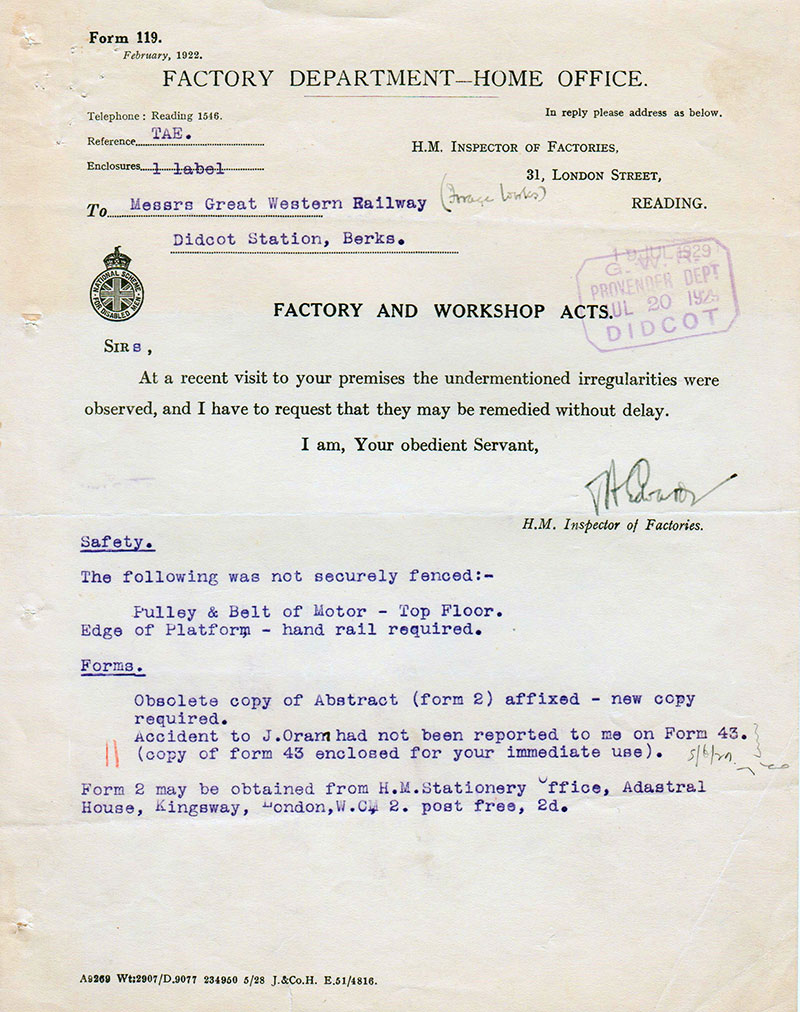
From our Great Western Trust collection, we illustrate a very official, and rightly so, warning to the GWR no less, dated 19 July 1929, from the Factory Department of the Home Office resulting from their recent inspection under powers granted by the various Factory and Workshop Acts.

The Provender Building in 1906. The pond in the foreground was reservoir to supply water to the engine shed and the tanks for the sprinkler system in the Provender Building
On their Form 119 first created in February 1922, it covers a number of observations, the most significant being a pulley and belt of a motor not securely fastened. Beyond that an accident to a J Oram had not been reported on the appropriate form, and advice as to where another different form can be acquired.
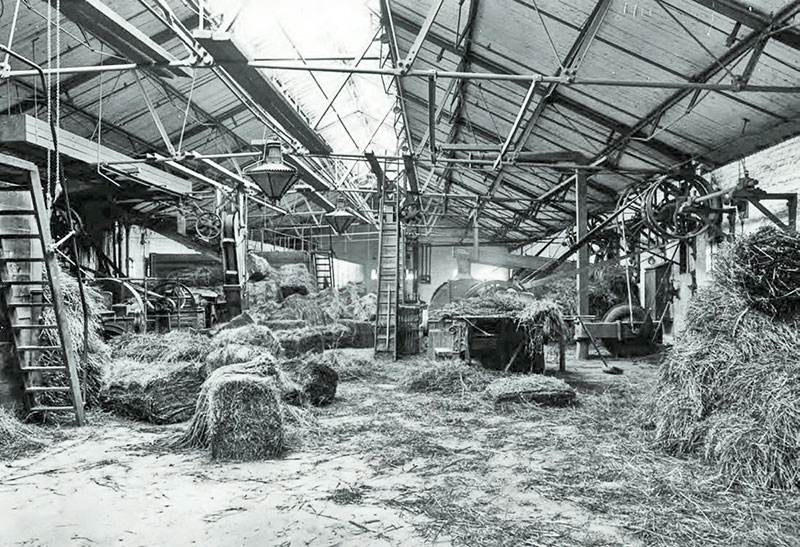
The top floor of the Provender Building in 1906, showing the belt-driven machinery
All rather official yes, but with proper reason as the massive collection of staff accident records on the GWR and BRWR in our Trust collection demonstrates, accidents were far too common, and many either life-changing, needing at least compensation, or worse, fatal.
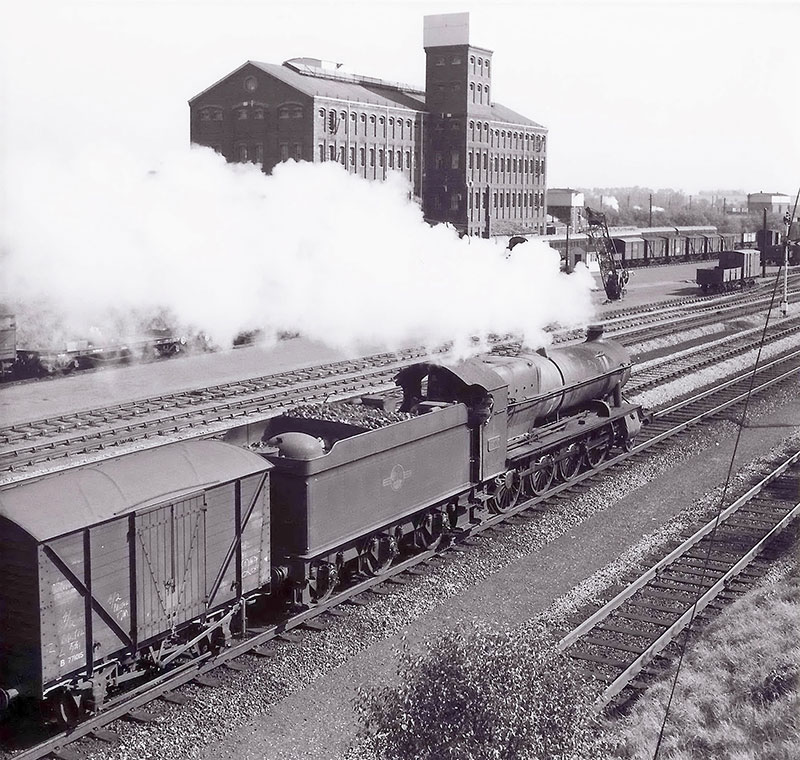
The Provender Building in September 1961, with 2-8-0 No 4703 running past with a goods train. Photograph by Michael Mensing
That loose pulley and belt may sound rather minor but a high revolution belt let loose could inflict horrible injuries, and at that time, belt driven workshop machinery was still very prevalent and special staff were employed to repair and replace belts, in situ, whilst the other belts were still rotating in long ranked lines of belt-driven machines!
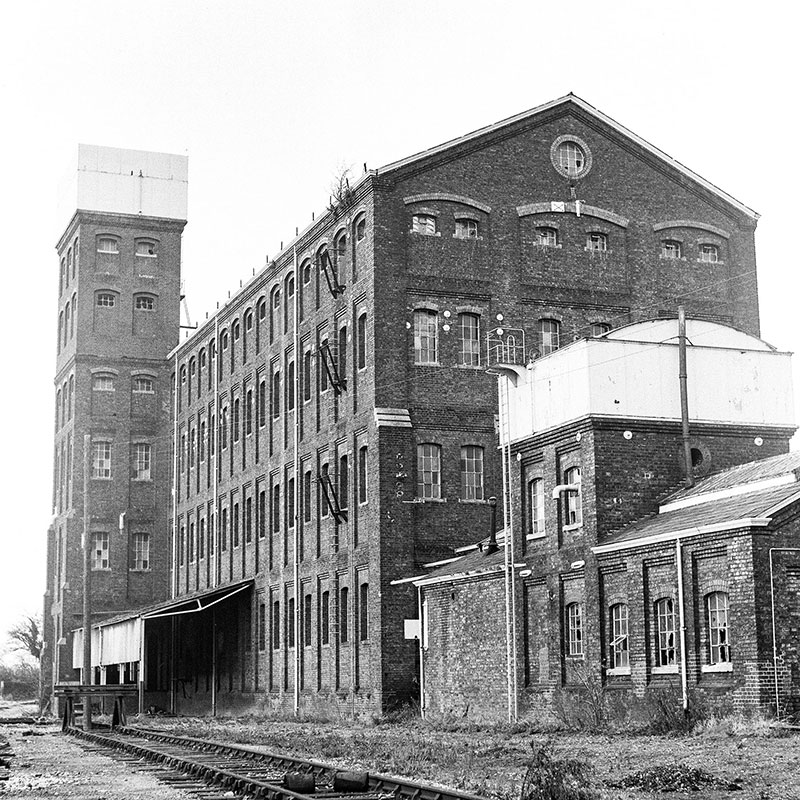
The Provender Building in the early 1970s
So this rather minor official letter was of much greater importance than it appears to us, would be acted upon immediately, and shines a light on the then current practices in workshops and of course railway buildings. We might shudder too, at this being Form No 119, dare we wonder what the Forms 1 to 118 covered?

Inside one of the empty floors of the Provender Building in the early 1970s
TUESDAY 24 OCTOBER
A piece of old Swindon?
This week we feature one of the larger items from the Trust collection.
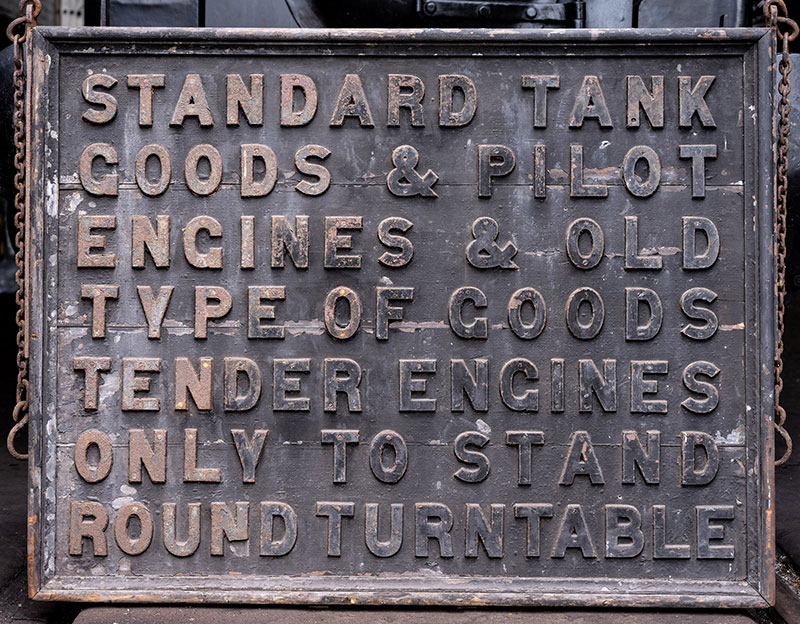
The notice in the Great Western Trust collection, specifying which types of locomotives were permitted stand around the turntable
A remarkable survivor, it is very heavy and consists of cast iron letters on a wooden back board. It measures 57” x 45” (1448 x 1142 mm), and spent its life suspended from substantial iron chains and hooks. The question is where?

A diagram of Swindon engine shed c. 1947, with the single turntable roundhouse of 1908 at the top, above the original engine shed with nine straight roads and a smaller turntable behind. The diagram was drawn by Eddie Lyons for his book An Historical Survey of Great Western Engine Sheds 1947 published in 1972
Given its condition, it spent its life under cover so that points to a roundhouse. The esoteric language suggests the Victorian/Edwardian period and an engine shed with more than one turntable but of different sizes. That narrows the field down to one location – Swindon. The original 1871 shed there was extended in 1908 with a new roundhouse, similar in construction to Old Oak Common so it seems very likely that this sign was made to instruct that the smaller (older) turntable was to be used for designated types of engines and was suspended from the roof trusses of the earlier shed.

The new roundhouse at Swindon under construction in 1908
The sign is in sound condition, well ‘smoked’ from decades of hanging in the roof of an engine shed, although the left hand side is less sooty so may not have been directly above steam engine chimneys. It would be inappropriate to strip off the patina acquired over all those years to repaint the sign.
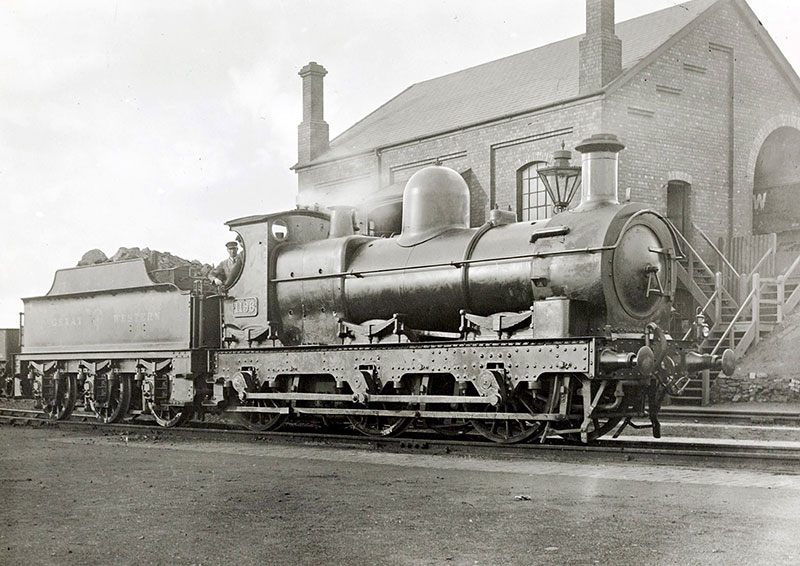
Armstrong Goods 0-6-0 No 1196 built in 1876. Was this an example of the ‘old type of goods tender engines’ that could stand round the turntable?
If any of our readers have confirmation of the sign’s original location we would love to hear from you.
TUESDAY 17 OCTOBER
Dinner is served
We hold in the Great Western Trust collection a simply vast variety of dining and other refreshment related items. So popular is that subject to our visitors to our Museum & Archive display room that a display case is permanently dedicated to this subject, with china, glass, EPNS items and menus etc. Our reserve collection would overwhelm this display, and we could wonder why we have so much?
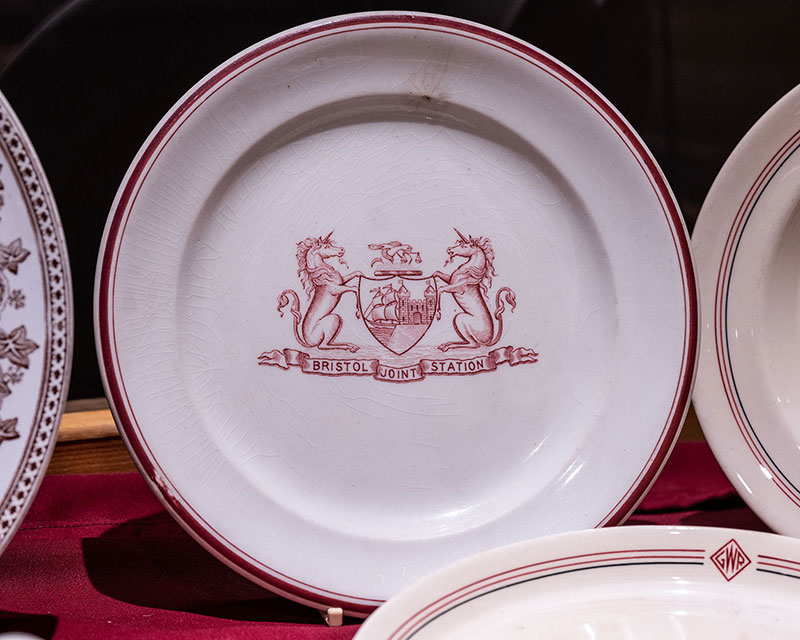
It would seem from our very long experience in our Museum, that despite of, or maybe because of, the Great Western Railway and its contemporaries marking their utensils with their name or motif, the folk enjoying that standard of service frequently saw fit to ‘keep a memento’ as it were. It is on record that during WW2, the GWR Chairman in his report to the shareholders, lamented the catastrophic theft of its dinnerware items.
In a way, the Trust is the unexpected beneficiary of that ‘trophy taking’ as we have wonderful stories of families who directly or through their ancestors came to possess such treasured items.
Today, we highlight the dinner-plate illustrated as an extremely rare example of just how early in the GWR’s existence was the adoption of corporate identity on such items. The caption can be enhanced by saying that its about 10 inches in diameter and has ‘Furnival 32’ on its base.

Our 'find the animals' quiz adds interest to a visit to the museum for our visitors, who can search through the showcases and on the walls to find the animals illustrated, including a unicorn
Brunel’s magnificent Bristol Temple Meads station was originally shared by the GWR, the Bristol & Exeter and the Bristol & Gloucester Railway (later absorbed into the Midland Railway). In 1845 the Bristol & Exeter opened its own station at right angles to the GWR’s station, with an express platform for through trains on the curve linking the two lines. In 1865 an Act of Parliament was passed for a new Bristol Joint Station to be built. By the time it was completed in 1878 the GWR had absorbed the Bristol and Exeter, so the management of the new station was split between the GWR and the Midland Railway.
Hence this mid Victorian plate in the Trust collection bears the coat of arms of the City of Bristol; the shield of a ship sailing from the water gate of Bristol Castle, supported by two unicorns with a crest above of a serpent, representing wisdom, and scales of justice. On the ribbon beneath it, in place of the City’s ‘Virtue et Industria’, are words identifying the plate's ownership as ‘Bristol Joint Station’. The Bristol coat of arms was of course in general use on the GWR, where combined with that of London it adorned the GWR's own crest.
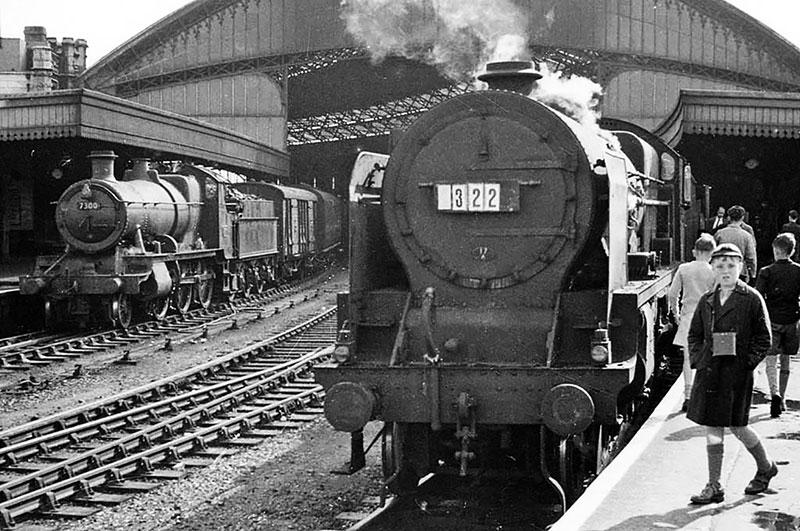
Bristol Temple Meads station with Western Region and London Midland Region trains on 2 August 1958. The LMS Patriot class 4-6-0 No 45509 The Derbyshire Yeomanry, on the right, is heading the 11 am Newquay to York, while on the left a GWR 43xx 2-6-0, No 7300, is in charge of the 4.55 pm semi-fast to Portsmouth & Southsea via Westbury and Salisbury. Photograph by Ben Brooksbank
If therefore that plate was ‘taken away’ to another station, it would simply scream quickly to be returned, but perhaps it was taken by a customer as a trophy? We may never know its true story, but it is sad to relate that when even the GWR chose to alter the decorative designs on its cutlery and china, the earlier versions were replaced as quickly as possible, most by destruction. Hence, perhaps for the benefit of our visitors and our future generations, the ‘trophyism’ whilst strictly illegal as theft, has in cases of extremely rare examples like this dinner-plate, given us an object that we may never have known existed.
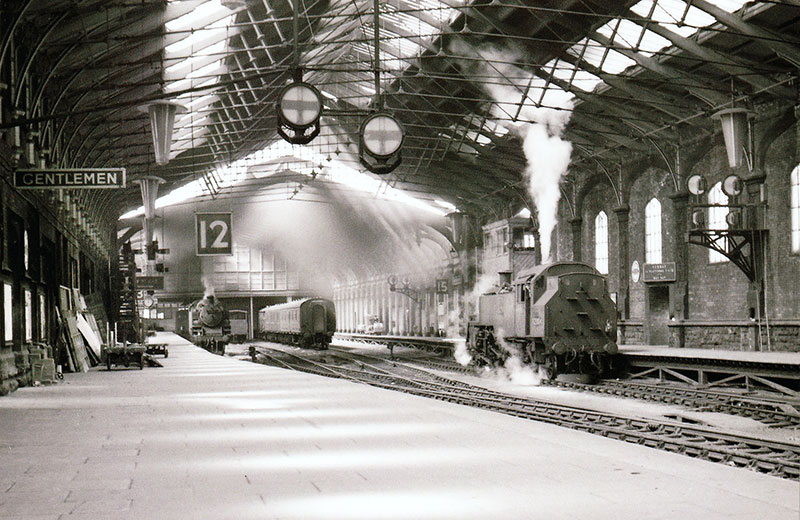
The original GWR station at Bristol Temple Meads, with the 1840 Brunel train shed in the background. By the time this photograph was taken on 17 June 1965 it was used by Midland Region local trains. Bristol Old Station signal box is visible above the locomotive. Photograph by Phil Kelley
TUESDAY 10 OCTOBER
Acts of Parliament
Something topical this week.
From the very beginning, Great Britain has always exercised very tight control over the railway industry and in order to build a new line, proprietors had to obtain an Act of Parliament, before any physical construction took place.
Having cancelled the Northern section of HS2, it may be time for His Majesty’s government to invoke the Abandonment of Railways Act, 1850 and The Railway Companies Act, 1867.
The purpose of these Acts was to give the Board of Trade the power to lay before parliament, a warrant for the abandonment of a railway.
Long before the mass closures of the 1950s and 60s this was a mechanism to abandon the proposed construction of a railway which, for various reasons, usually financial, was deemed to be unviable. Thus, the proprietors could not just cancel the project on a whim, but had to go through a legal parliamentary procedure in order to abandon the embryonic line.
A recent donation of paperwork included a number these warrants, that for the Bodmin Railway is illustrated here. After the Cornwall Railway opened in 1859 an independent Bodmin and Cornwall Junction Railway was authorised in 1864, but lack of funds prevented the work and it was abandoned. The Great Western Railway opened its branch line from Bodmin Road to Bodmin General in 1887.
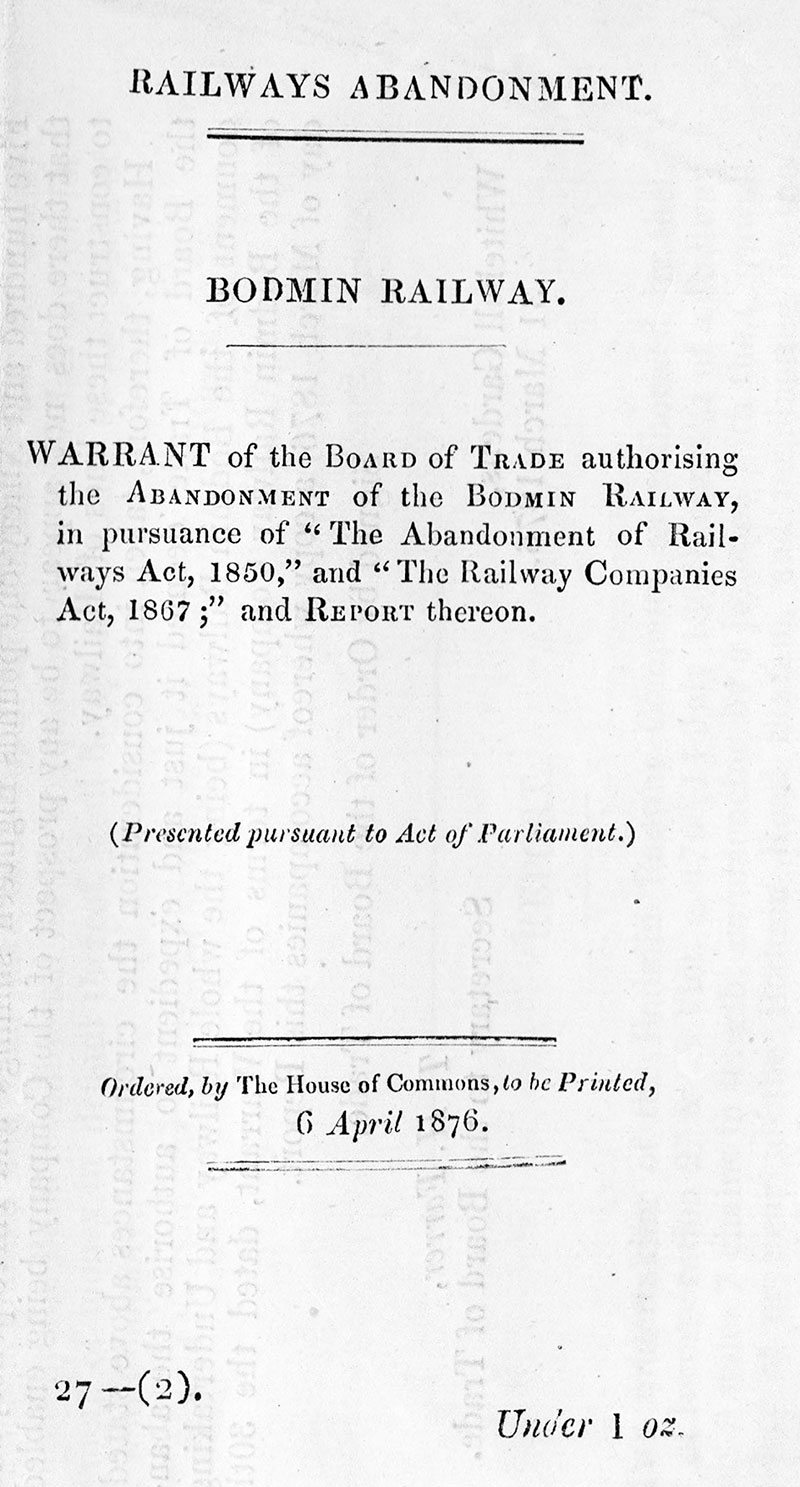
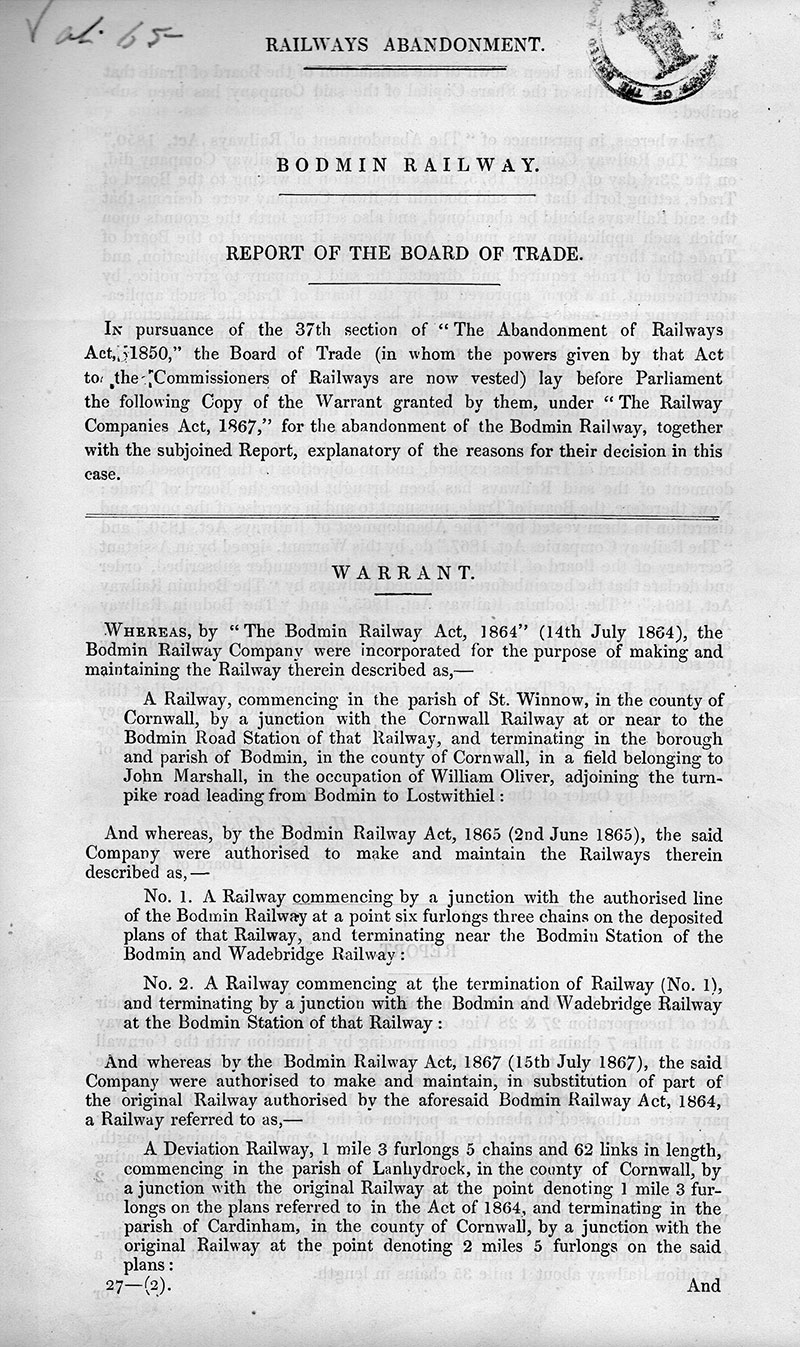

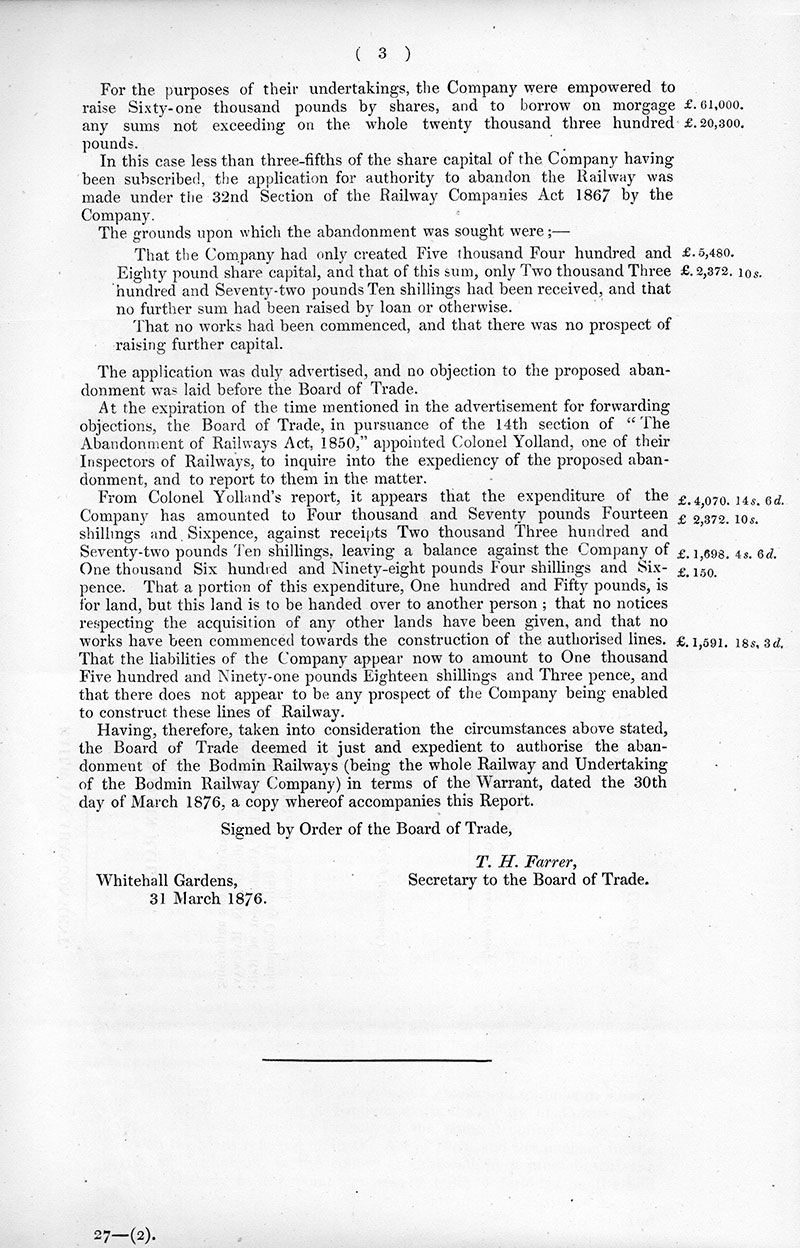
Other abandoned railways in the collection include the Cowbridge Railway, The North and South Wiltshire Junction Railway, The Afon Valley Railway and the Central Cornwall Railway all of which used the 1850 and 1867 Acts and were ‘strangled at birth’.
On a social history note, from the House of Lords 1871 session we show a Statement from the Great Western, Bristol & Exeter, and South Devon Railway Companies relating to people belonging to the ‘LABOURING CLASSES’ to be displaced by the compulsory purchase of their properties due to the railway construction in Penzance. It concludes that ‘no inconvenience is anticipated, there being other accommodation available in the neighbourhood’. Maybe if such cavalier attitudes still applied, the builders of HS2 would have had a much easier (and cheaper) task.


The photographs show Penzance station as seen from Chyandour cliff, the first in the early 1900s and the second in August 1967 – image by Martin Tester, Creative Commons.
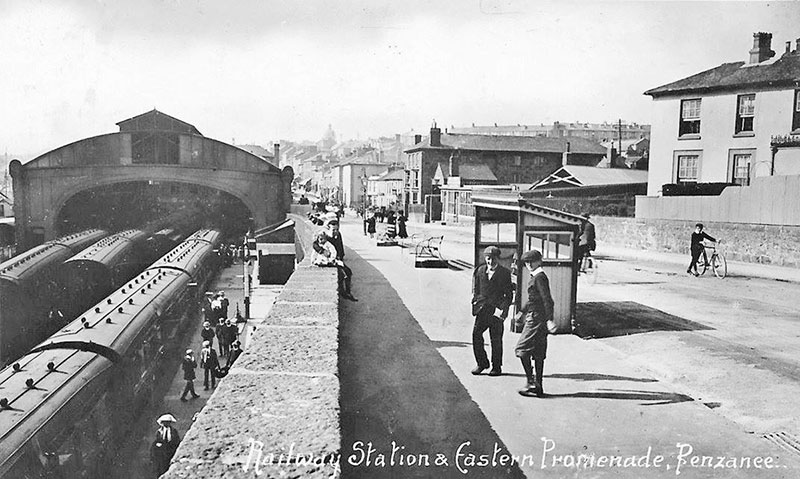
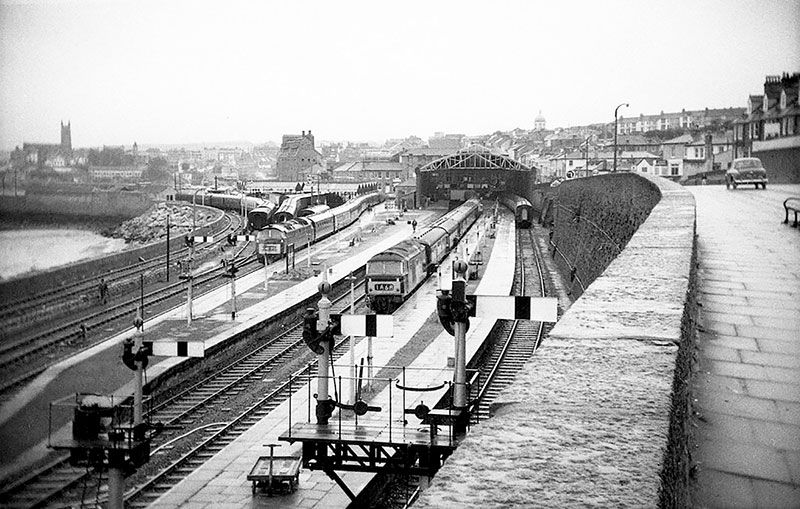
As a footnote, have a look at the name of the Parliamentary Agents. Very Dickensian
TUESDAY 3 OCTOBER
Western Region Re-organisation
Some 60 years ago, 1963 proved to be quite a year on the nationalised British Railways. With Doctor Richard Beeching at the helm of the British Railways Board, it saw the abolition of the British Transport Commission, and the recasting of the Regions which meant that all of the Southern Region in Devon & Cornwall was brought into the Western Region domain.

Our blog today, is based upon the BRWR Staff Magazine of January 1963, a copy held in our Great Western Trust collection, in fact along with all its issues until it was replaced by a newspaper version, Rail News, in June of that year.
The illustrations of the cover picture and the informative sketch map within, were merely a part of many articles in this issue that expressed the high hopes of mutual bonding of the staffs where once, ‘competition’ was the norm, dating from the pre-nationalisation era.

The cover picture shows former Southern Region men at Exeter Central station being welcomed into the Western Region fold by leading porter Charlie Pullen, on the right, of Exeter St David’s. He is shaking hands with Exeter Central’s inspector, Fred Hutchings who is backed up by a group of his station staff.
The map of the new Western Region shows former Southern Region lines in Devon and Cornwall, most of which which were soon swept away under Western Region management. How the closure of the inland second route from Exeter to Plymouth is regretted nowadays when the sea wall route via Dawlish is closed by storms!
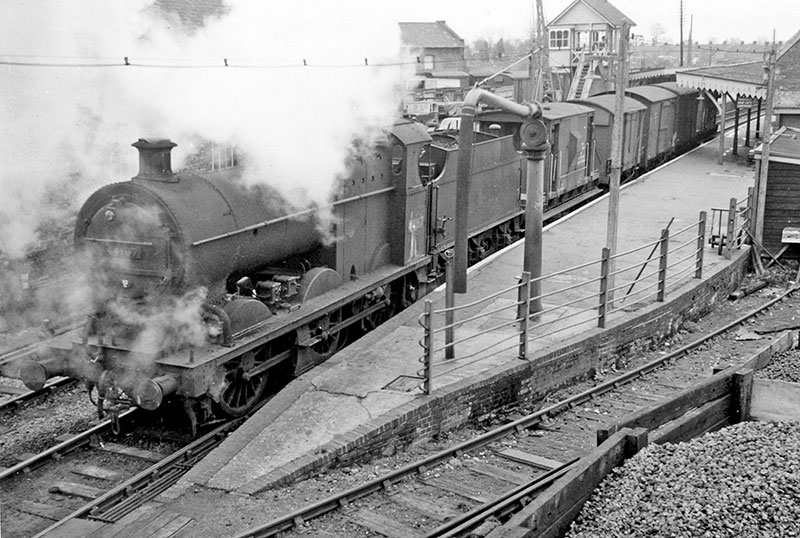
Blandford Forum station on the Somerset and Dorset Railway, with an Up freight hauled by Midland 4F 0-6-0 No 44167. The photograph was taken by Ben Brooksbank on 20 April 1963, soon after that section of the line had come under control of the Western Region
The Plymouth Division did not last long, being subsumed into the Bristol Division. The most positive and lasting outcome of that was the Plymouth Divisional Manager, David Pattisson, moved to become London Divisional Manager, where he allowed the Great Western Society to move into Didcot engine shed in 1967. 55 years later Didcot Railway Centre is thriving, but where are the Divisions, where are the Regions, where is British Railways? Long displaced in subsequent reorganisations.
The map also shows the Western Region decapitated, with its northern territories around Birmingham handed over to the Midland Region. In the process the Western Region lost its industrial midlands markets and gained a largely rural west country landscape with less opportunity for generating revenue than the areas it had lost.
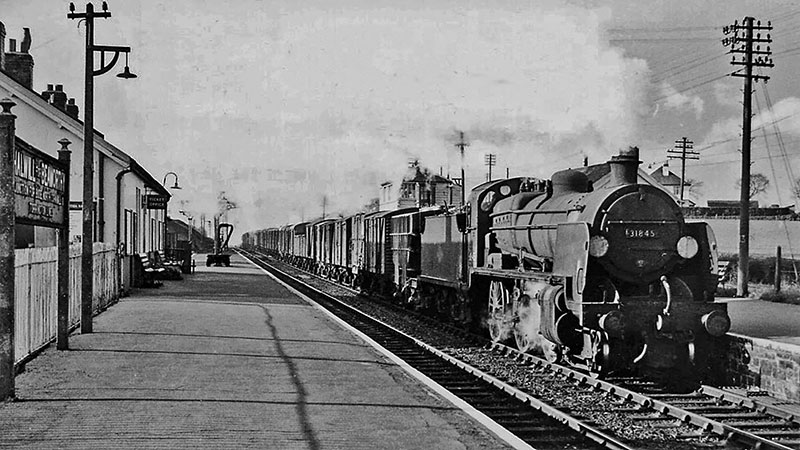
Halwill Junction on the former SR line to Bude and Padstow, with an Up freight headed for Okehampton and Exeter Hauled by Maunsell N class 2-6-0 No 31845. The photograph was taken by Ben Brooksbank on 17 April 1964
In truth, like all ‘great ideas from the top of an organisation’, the devil was in the detail, and a great deal of its impact was for those individuals who had had no vote in the matter but whose careers were directly impacted. Most railway historians and even enthusiasts reach for the Somerset & Dorset line’s demise under the ‘brutal WR’ regime. The Western Region had already taken over the northern section of the Somerset and Dorset in 1958 and had re-routed the Pines Express via Oxford in 1962. From 1963 the southern section from Templecombe to Poole became part of the Western Region and the whole line was closed in 1966.
However, little if anything has been published regarding the individual staff, who in many grades, immediately found changed realities. One striking example was in the footplatemen’s pay and conditions and their promotion prospects. Many ex GWR men rankled that despite all the promises made at nationalisation, their long fought for agreements with GWR management, were now being reduced to the lowest common level across the whole railway system, and when ex-SR men arrived with differing expectations, not least on the promotion ladder, it’s best to merely say that matters became heated.
Such is the inevitable outcome of imposed change without prior consultation, but the enormous size of the railway staff alone, frankly meant that pain of one sort or another would arise no matter how much negotiation had been undertaken.
Didcot Railway Centre Newsletter
Stay up to date with events and what's going on at Didcot Railway Centre.
You may unsubscribe at any time. We do not share your data with 3rd parties.